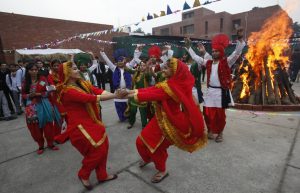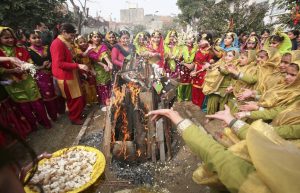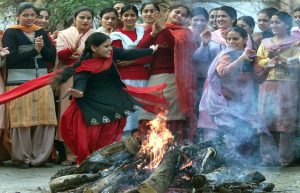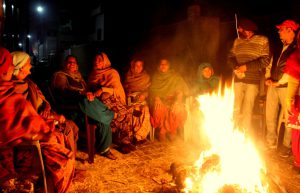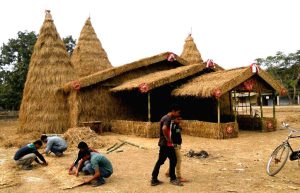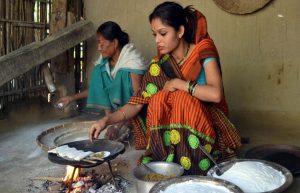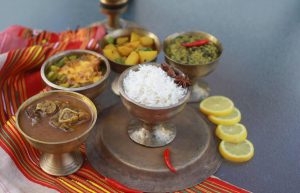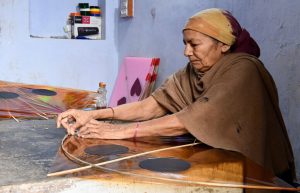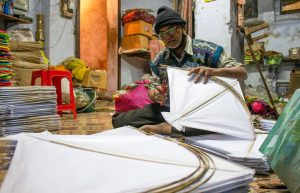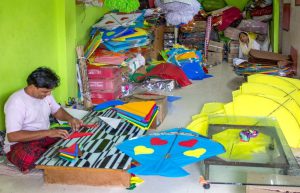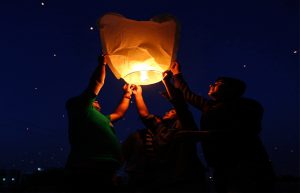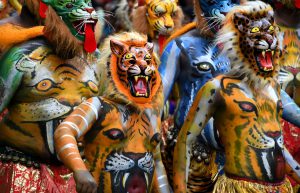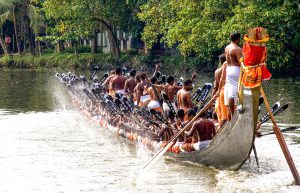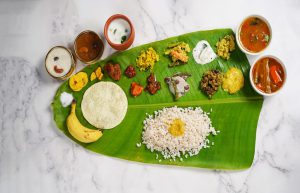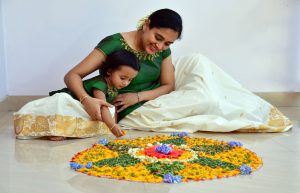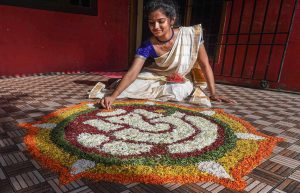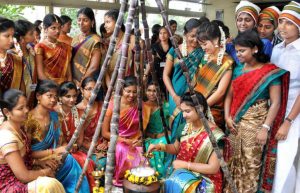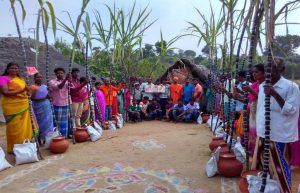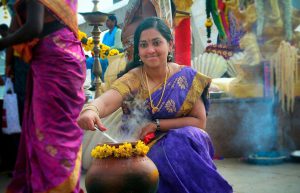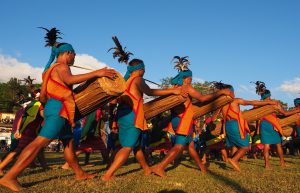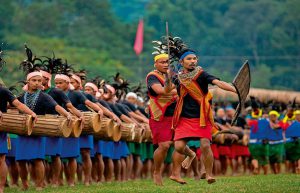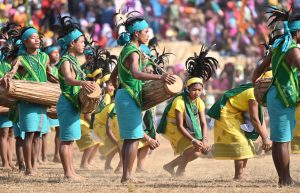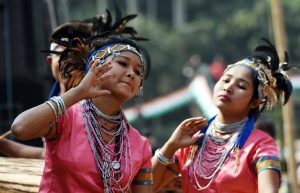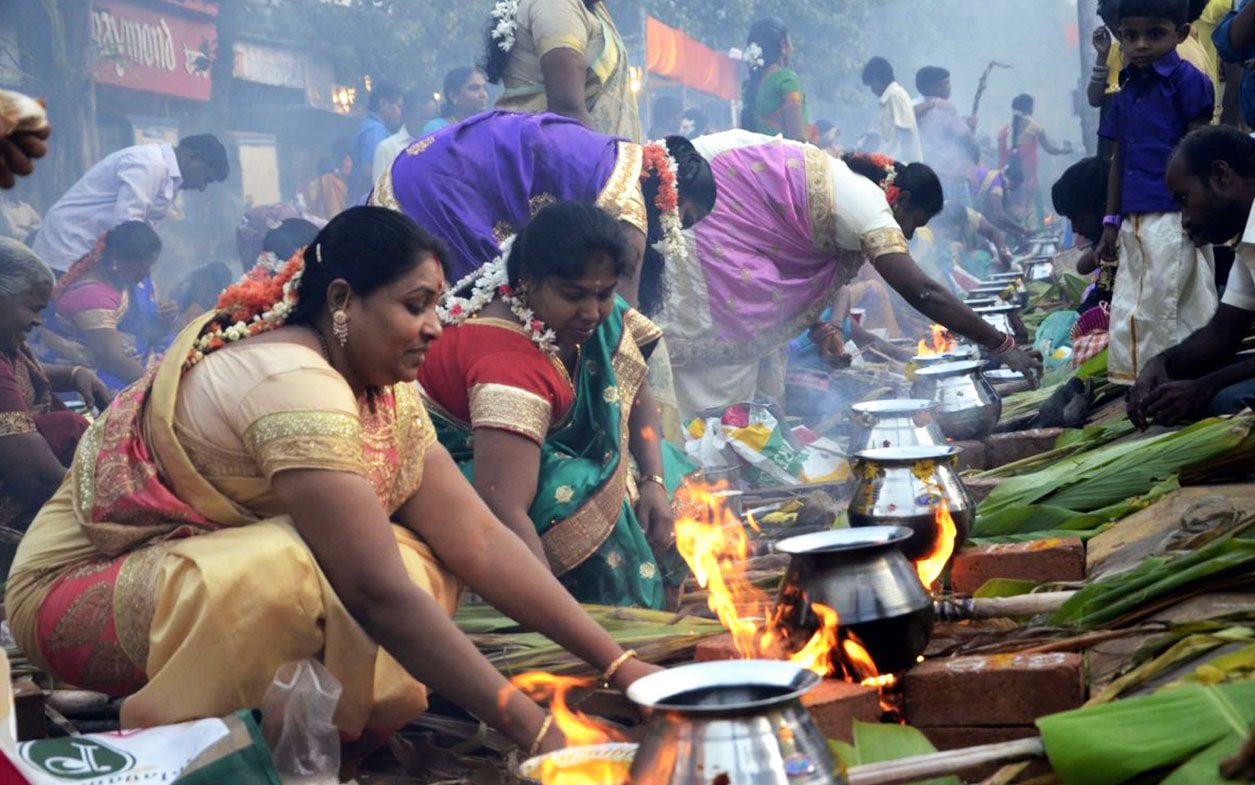
art of travel
What’s New
STAYS TO WATCH OUT FOR
New Hotels
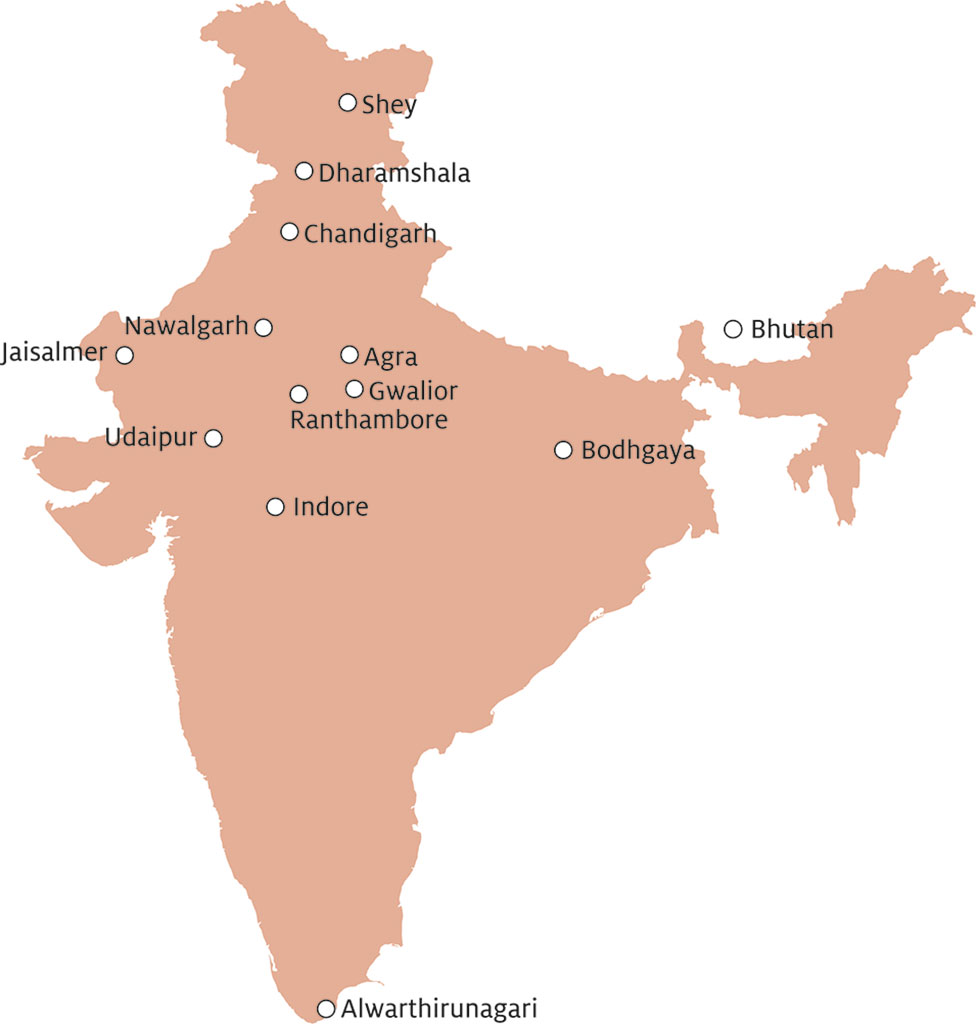
- Shel Ladakh, Shey
- Brij Anayra, Dharamshala
- Aura Life, Chandigarh
- Da Bungalow, Agra
- Vivaana Museum Hotel, Nawalgarh
- Taj Sawai, Ranthambore
- The Trio, Jaisalmer
- The Experience, Udaipur
- Krishnayan Heritage, Gwalior
- Wow Crest – IHCL SeleQtions, Indore
- Hyatt Place, Bodhgaya
- Anantya In the Village, Alwarthirunagari
- Pemako Punakha, Bhutan
We Are Excited About
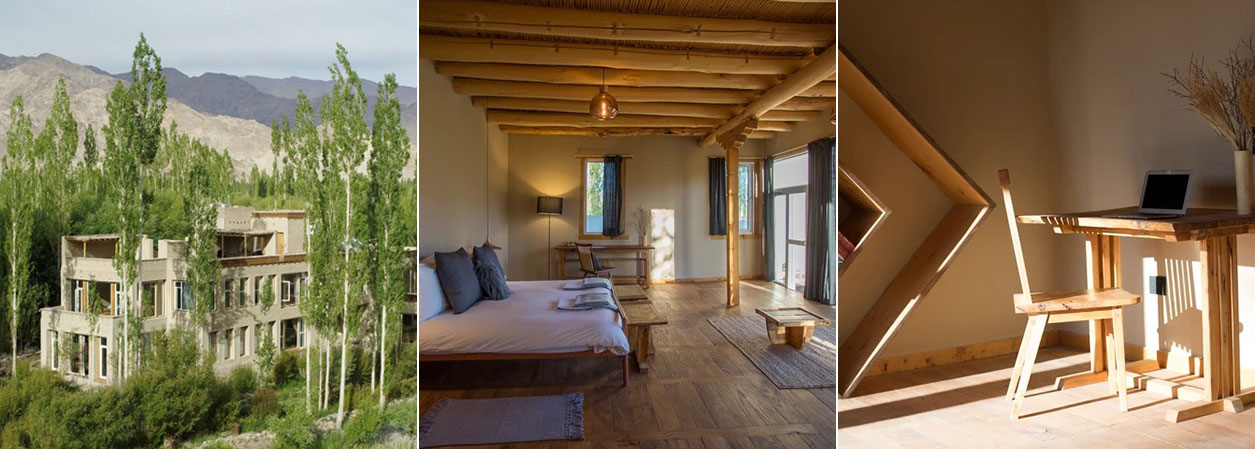
Shel Ladakh, Shey
Shel acquired its name from the ancient royal capital of Ladakh – Shey, formerly known as Shel. An experience with a deeply rooted sense of hospitality, Shel is a private home built over seven years using local architectural styles and methods. It is a combination of sustainable luxury, ancestral wisdom, modern design, and natural materials. Surrounded by the raw beauty of the Himalayas and the Indus, it is the perfect gateway to explore the extraordinary mystical mountain region of Ladakh. It consists of 3 en-suite bedrooms with unparalleled views and a minimalistic interior making it a stunning yet functional haven. In addition to the stay, guests can plan their menu with the chef, enjoy a cooking class, take a picnic at the river, walk to the Shey Palace and monastery complex, venture to the picturesque villages of Hemis and Stok, or spend their day relaxing on the rooftop or at a lovely sun-dappled garden area.
Write to your relationship manager for more details
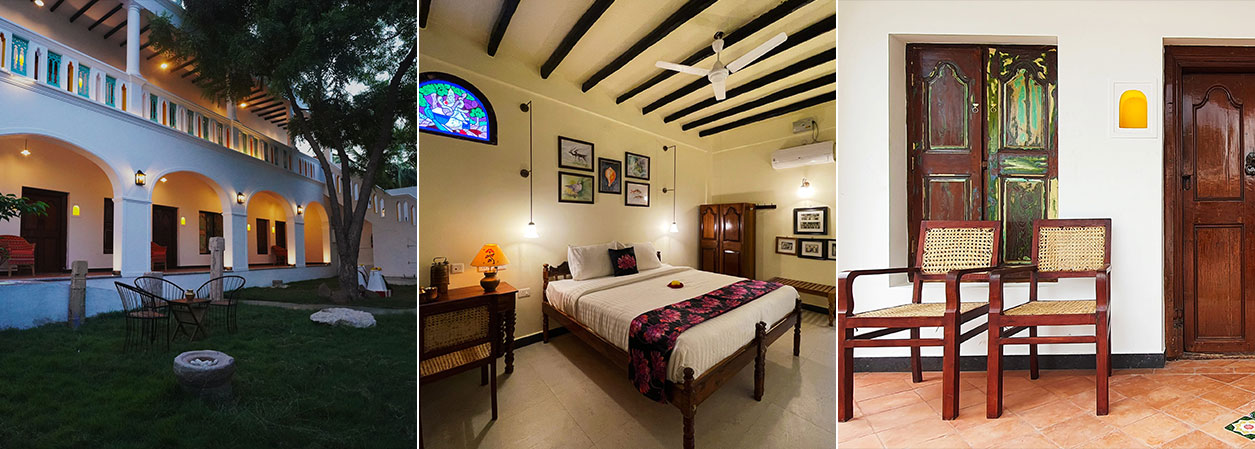
Anantya in the Village, Alwarthirunagari, Tamil Nadu
Nestled in the historic village of Alwarthirunagari on the banks of the river Thamirabarani in Tamil Nadu, Anantya in the Village is a heritage-inspired homestay designed as a traditional village home. This boutique homestay has 8 large and spacious rooms that are tastefully furnished to evoke a sense of timelessness. Guests can taste flavourful and simple vegetarian food that reflects the regional specialties of Tamil Nadu. They can spend their days leisurely exploring the quaint surroundings, visiting the unique temples around Alwarthirunagari, or connecting with the warm-hearted local community to delve into their customs and explore their handicrafts and way of life. It makes for an ideal stopover between Madurai and Kovalam Beach.
Write to your relationship manager for more details
EXPERIENCES TO WATCH OUT FOR
New Experiences
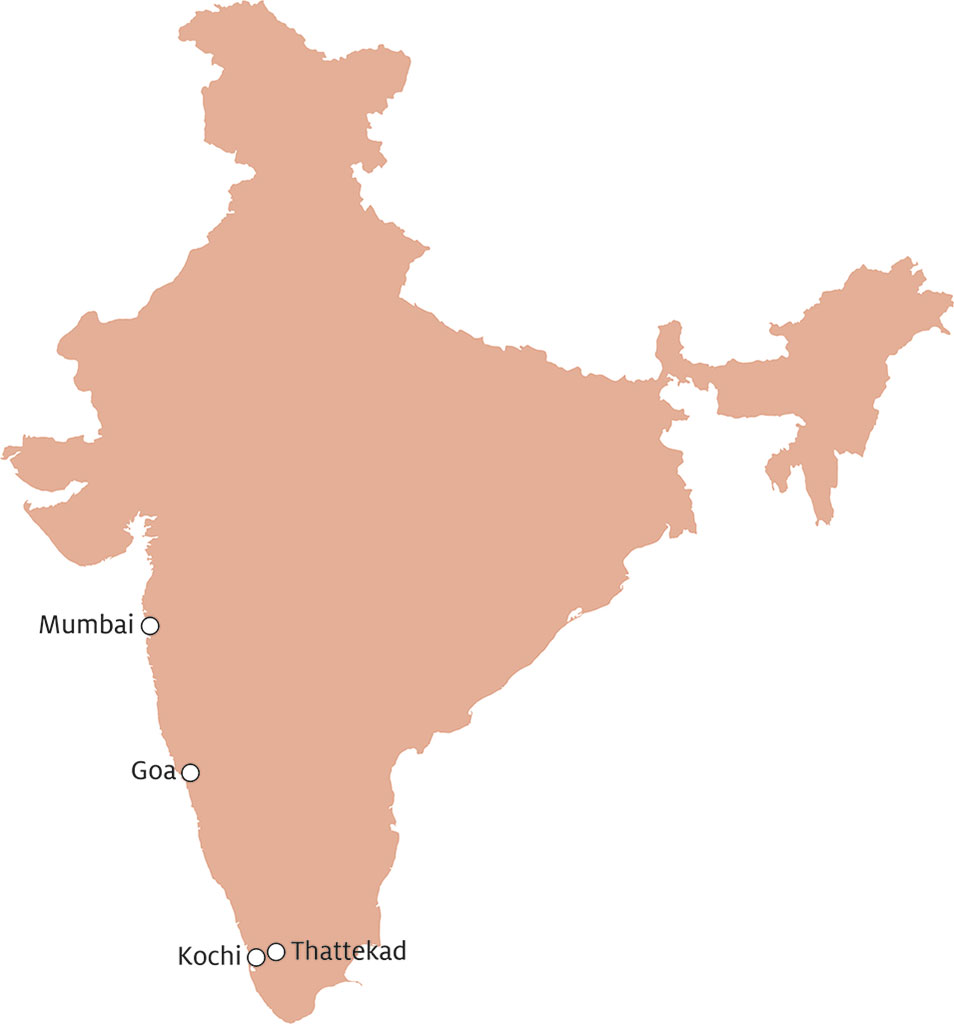
- Jewels by the Sea, Mumbai
- The Beauty of the Backwaters, Kochi
- Inside the Mangrove, Kochi
- Bamboo Connection, Thattekad
- ‘Maka Suseg Di’, Goa
We Are Excited About
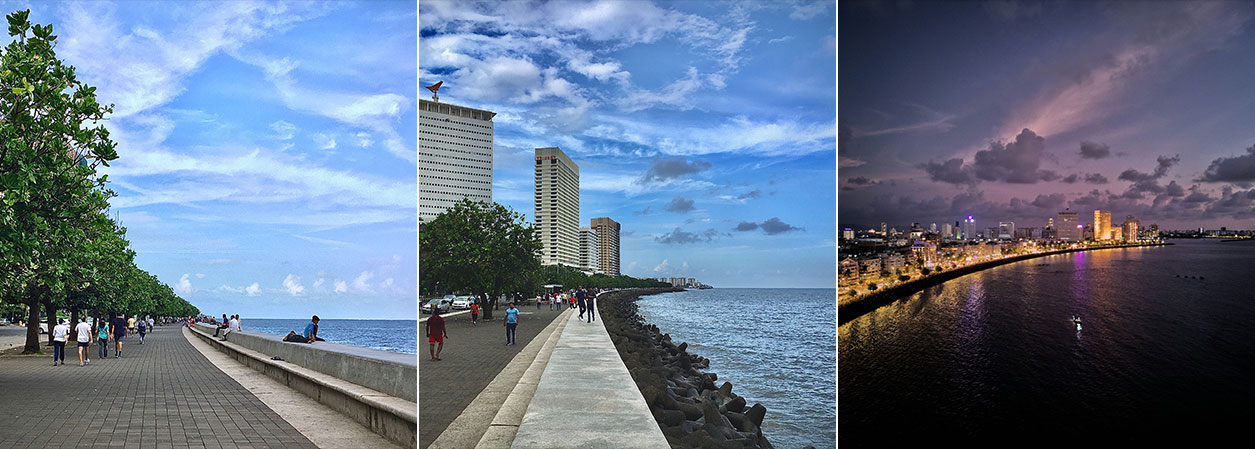
Jewels by the Sea, Mumbai
The tour explores the history of the development of one of the cosmopolitan neighbourhoods in Mumbai, and how it emerged as a symbol of Mumbai’s modern identity. In this tour, you will witness a curated selection of iconic buildings by the sea stretch that marks a unique skyline.
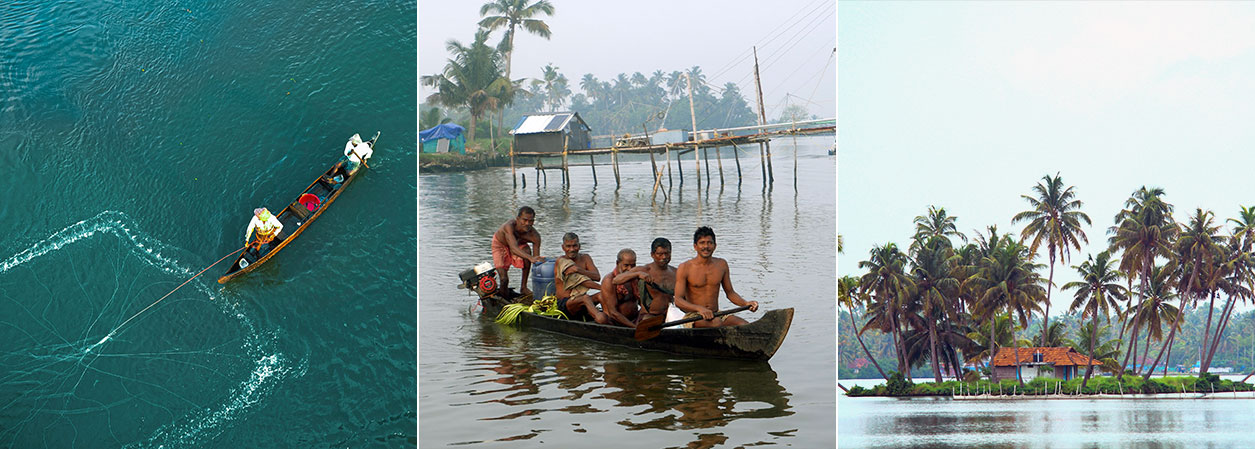
The Beauty of the Backwaters, Kochi
Experience the tranquillity of the backwaters of Kochi, connect with the local community, learn the traditional farming techniques, relish the local flavours, and enjoy the mesmerising sunset during a boat or canoe ride.
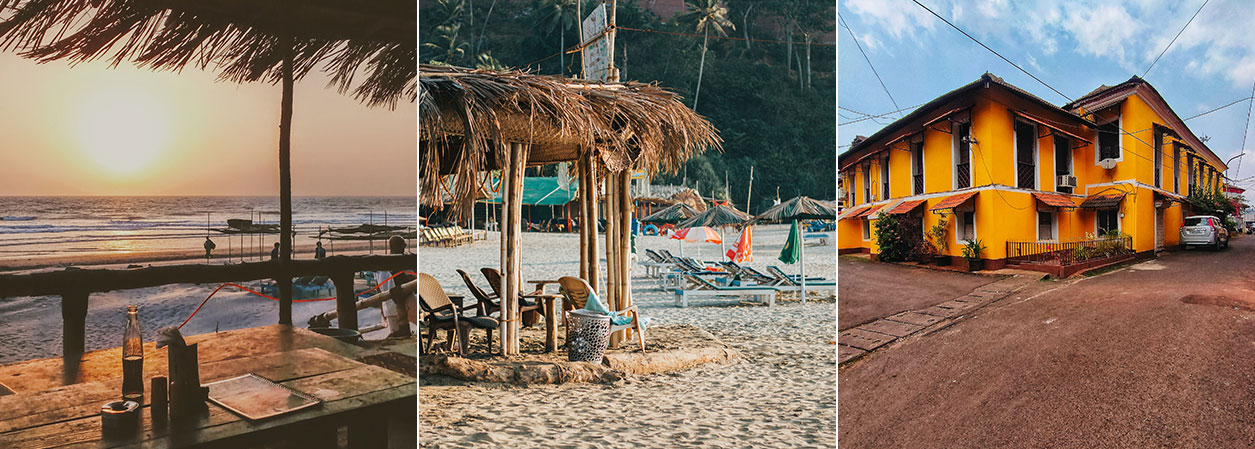
‘Maka Suseg Di’, Goa
Many of us have heard of the Japanese concept of the ‘ikigai’ or the Scandinavian’s ‘hygge’ that has enabled people to lead a better life. But did you know about the Goans’ philosophy of life? A common saying in Goa ‘Maka Suseg Di’ which means ‘Give me peace’, is associated with a yearning for ‘peace and satisfaction’ embracing the susegad life. Venture on a Goan experience with us that will unveil the secrets of finding your susegad.
Write to your relationship manager for more details
ITINERARY OF THE MONTH
Where Spirituality Meets Art
Chennai – Mahabalipuram – Thiruvannamalai – Pondicherry – Kumbakonam – Thanjavur – Madurai – Rameshwaram – Alwarthirunagari – Kanyakumari – Trivandrum
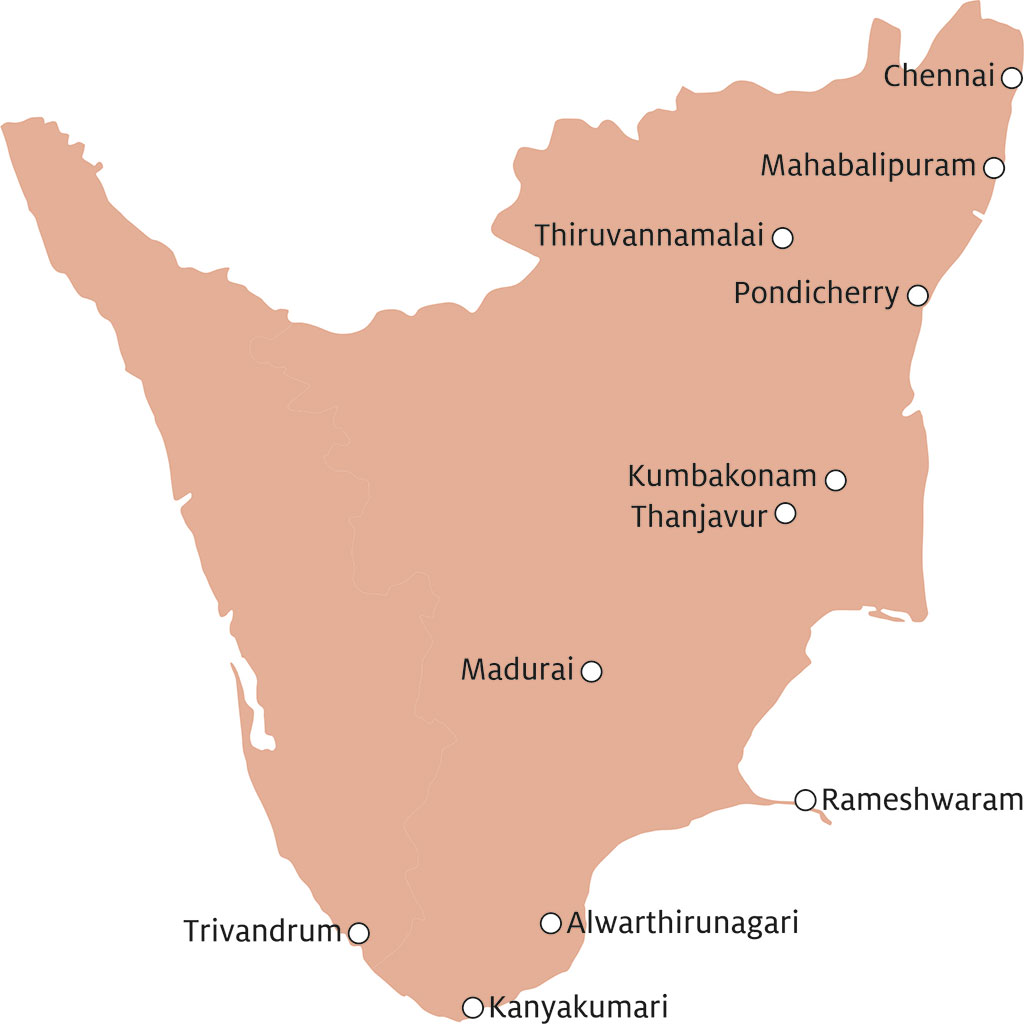
Highlights of the Tour
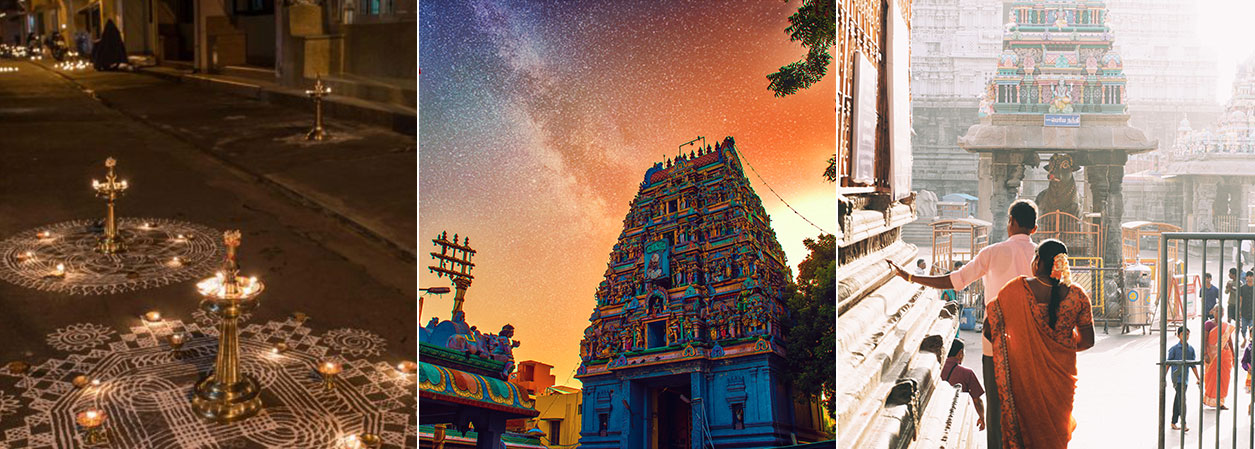
- Discover the stories hidden in the rituals of daily life in a bustling neighbourhood of Chennai that pre-dates the city by 2000 years – stories of local life, of Gods and demons, of ancient customs and symbolisms, and Mylapore and Madras.
- Visit the ancient shore temples of Mahabalipuram which are surreal in their location and unsurpassable in the craftsmanship of that era.
- Uncover the mysticism of Arunachala Hill, home of Maharishi Ramana, one of India’s greatest Spiritual teachers.
- Embark on a fascinating exploration of the iconic Sri Aurobindo Ashram, a beacon of spiritual tranquillity and a testament to India’s rich spiritual heritage.
- Admire the magnificent temples of Chidambaram, Gangaikondacholapuram, and Darasuram; two of these are UNESCO World Heritage Sites built by the Kings of the Chola Dynasty who ruled from 300 BC to 1279 AD.
- Attend the Night Ceremony at the Brihadeshwara temple in Thanjavur
- Explore the Arulmigu Ramanathaswamy Temple famous for its intricate ornamentations and majestic architecture apart from its sanctity.
- Dive into the heart of Alwarthirunagari, a quaint town offering a unique blend of spirituality, history, and vibrant culture.
- Visit the Raja Ravivarma Paintings Art Gallery in Trivandrum. It has the largest collection of Raja Ravivarma’s works, one among the greatest painters of India.
Write to your relationship manager for more details.
NEW HANGOUT PLACES

The Backwaters, Kochi
An experiential waterside restaurant that offers kayaking along the serene backwaters, cycling through the villages, and other glimpses of rural life at its unfiltered best along with fishing for a true pond-to-plate experience. The rustic ambience adds to the unaffected allure of the minimalistic space. The menu strikes a fair mix of a South Indian selection and an extensive continental spread to gratify every palate.

Indian Accent, Mumbai
The iconic Indian Accent has finally arrived in Mumbai. Located at Nita Mukesh Ambani Cultural Centre in Bandra Kurla Complex, the restaurant celebrates the city’s Art Deco style – from interiors, and the lighting to the bar layout. With separate menu options including the Chef’s Tasting Menu, which is immensely vegetarian friendly, pushes the limits of culinary innovation while pleasing all tastes.
Write to your relationship manager for more details
NEW FLIGHTS

- Kathmandu – Lhasa –Kathmandu non-stop by Himalayan Airlines (operational only on Mondays)
- Agra – Lucknow – Agra daily non-stop by Indigo Airlines
- Varanasi – Lucknow – Varanasi non-stop by Indigo Airlines
Write to your relationship manager for more details
Stories from India
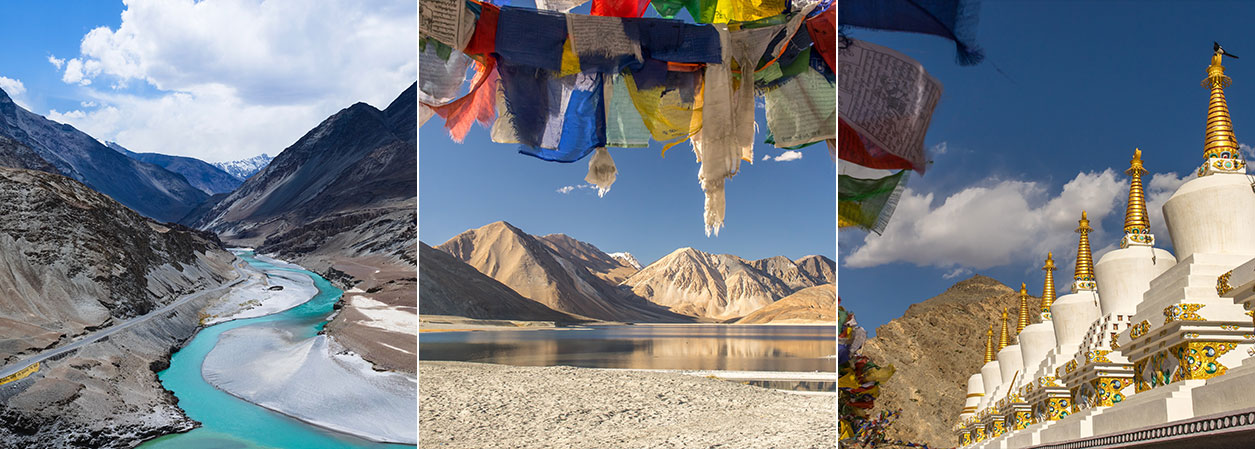
Ladakh’s strategic position on the Silk Road has resulted in numerous ethnic groups and people passing through, settling here, and leaving their mark on the local community. People from Japan, Persia, China, Greece, Eurasian Steppes, Syria, and Central Asia passed through the region trading goods, stories, and most importantly, cultural influences that we can see in the communities that live in the region today. The most ancient of the people who came to Ladakh is the community of Indo-Aryan Dards who today inhabit the villages of Hanu, Dha, Darchik, and Garkone, some 200 km from Leh. The villages together are called ‘Aryan Valley’ as it is believed that the Dards are the last remaining authentic Aryans left in India. Their beautiful legacy, which some scholars believe to be stemming from soldiers of Alexander’s army who had come here 2000 years ago, is as colourful as their elaborate costumes and floral headgear.
Write to your relationship manager to access the travel report of Jean Noel Esteve of Sita Paris who was recently in Ladakh.
Sustainability and Us
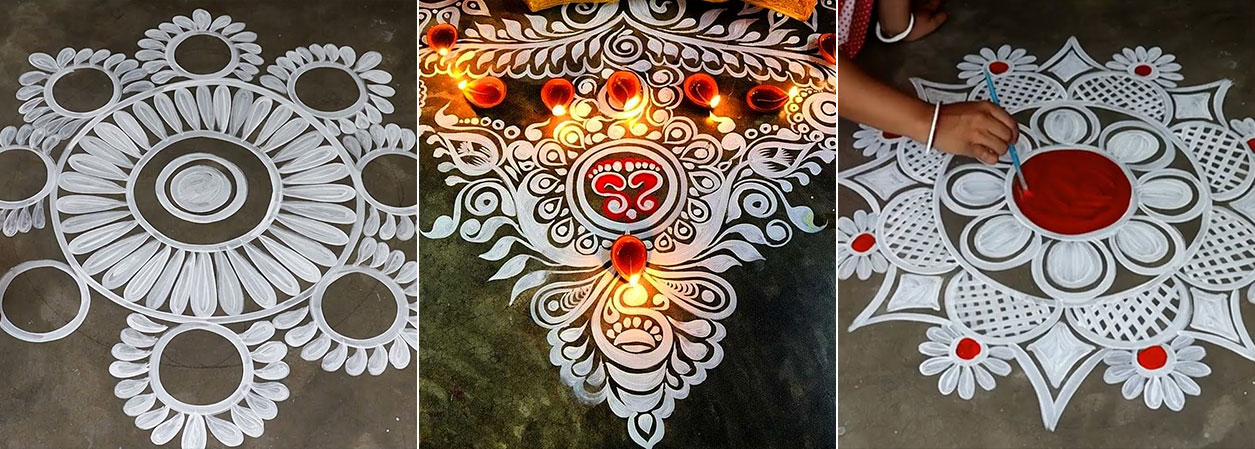
TRADITIONAL AND SUSTAINABLE: THE ART OF TRADITIONAL INDIAN FLOOR PAINTINGS
By Soma Paul, Product Team, Destination Knowledge Centre
One of my fondest childhood memories of Lokkhi Puja (the festival honouring the Hindu goddess of prosperity) is the way the entire home seemed transformed. I have watched my mother handle all the preparations on her own, and one custom that she never skipped was the custom of Alpona before placing the ghot (a metal pot filled with water and topped with a coronet of mango leaves and a coconut) in front of the goddess. The little footprints painted across the floors and entrances symbolised the arrival of Goddess Lakshmi. I could sense a joyous mood in everyone.
Alpona is a Bengali ceremonial art form that is mainly created by women of the home using a liquid paste made of rice flour on special occasions – be it festivals or weddings. Using their imaginations, women draw a range of patterns, such as a meandering trail around the house or a combination of hollow and solid geometric shapes, floral patterns, and paisleys. My grandmother taught it to my mother, who passed down the tradition to me as I had a passion for painting. When I grew up, I recall how, amid all the pandemonium, my mother would still manage to prepare me a white paste of rice flour and sneak it into my hands and say “Go! Make something beautiful,” with a smile on her face. I used to rush out the door and sit down to create intricate patterns, footprints, and lovely swirls covering the expanse of a porch or verandah. It was the best part of the festival for me, apart from the food, of course.
An ancient tradition, this tedious ritual of painting geometrical or free-hand motifs on floors with the fingers dates back thousands of years and various kinds of ephemeral floor paintings still thrive as traditions across the country. Most of the scholars agree that the tradition of floor painting predates the Vedic age. The earliest visual traces of floor paintings are found in one of the seals of Mohenjo-Daro. While in Bengal and Assam, it is known as Alpona, people in Bihar call it Aripana, Jinnuti in Odisha, Rangoli in Maharashtra, Pakhamba in Manipur, Kolam in Tamil Nadu, Apna in Almora and Nainital, and Mandana is the name given to it in Rajasthan – together, they form a part of a rich folk art genre.
It is believed that the designs possess mystical presence and power. Beauty being equated with holiness, it also served as the practice of making an offering of rice flour to tiny creatures and birds as one’s good deed for the day. Rice flour is also a cleansing element to ward off chicken pox in the summer and is therefore applied to children’s faces in some parts of rural India.
There are no written instructions or books on how to draw them. Much of this wisdom and tradition has now been lost to time. The practice of art can be therapeutic and this medium allowed women a chance to express themselves while simultaneously strengthening their bond as a community. Unlike framed artwork that will remain on the wall indefinitely, the art of floor painting is ephemeral and as such only comes alive during major festivals. Very few people offer to teach this form of art formally. For an art form that unites the community, and celebrates togetherness, one can only hope that this folk art will continue to be practiced for many decades to come.
Explore
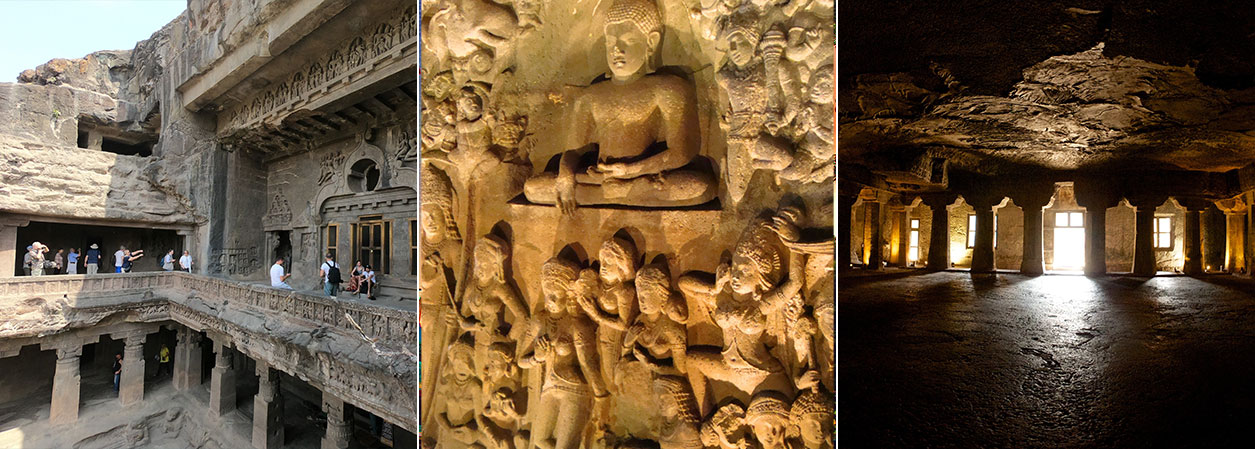
Aurangabad – The Tourism Capital of Maharashtra
From the Travel Diary of Inderjeet Rathod, Product Team, Destination Knowledge Centre
Aurangabad is a hub to many important historical sites in India. Two of them have been designated as UNESCO World Heritage Sites – the Ajanta and the Ellora Caves. Considered to be one of the finest examples of ancient Buddhist rock-cut caves, the Ajanta–Ellora caves evolved in between 200 BC to 650 AD.
One of the most important identities of Aurangabad is that of its numerous ‘Gates’– a typical characteristic of a medieval city. It is said that there were 52 of them at its peak, however only a few survive today. The most architecturally appealing gates of Aurangabad today are Delhi Gate, Kala Darwaza, Makia Gate, Paithan Gate and Rangeen Darwaza. Despite being a rapidly expanding Industrial town, Aurangabad manages to conserve important heritage sites in and around the city. It has a huge expanse but the older areas are still congested. The spacious urban areas, the congested old city, and the various heritage sites merge brilliantly to create the fine city that Aurangabad is today.
How many nights and why
Aurangabad is definitely a 3-night destination if not a 4-nighter. There are about 5 to 6 historical sites located in and around the city which are worth exploring. Visiting all of them requires at least 3 full days at disposal. An excursion to Ajanta Caves (110 km drive one-way) itself takes up a full day. Ellora Cave, Grishneshwar, Khuldabad, and Daulatabad lie on the outskirts in different directions, therefore visiting those takes up another full day. A sightseeing tour of monuments in the city like Bibi ka Maqbara and Panchakki covers half a day. The second half of this day can be utilized to visit Paithan town which lies 50 km south of Aurangabad, famous for the production of Paithani Silk Sarees.
Best time to visit
November to February is the best time to visit Aurangabad. The winter days are pleasant with clear skies and sunny mornings but nights can be a bit cold.
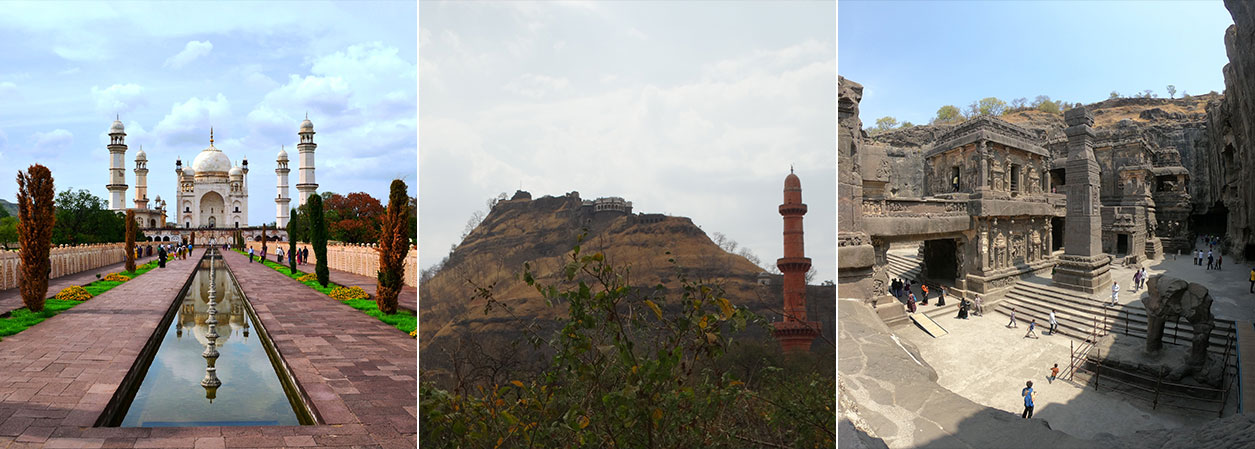
Activities to do at the destination
Heritage Sites in Aurangabad City
AURANGABAD CAVES
Located on a hill, these are 12 rock-cut Buddhist shrines dating back to the 6th and 7th century AD
Duration of the sightseeing tour: 45 minutes maximum
Can it be combined with the sightseeing of another place/s: Yes, with Bibi Ka Maqbara and Panchakki.
PANCHAKKI
As the name suggests, it was a water mill which used to grind grain for the pilgrims. This monument is a brilliant example of the scientific temperament in the medieval era. It used to run by the force of water brought down from a spring in a mountain.
Duration of the sightseeing tour: 30 minutes maximum
Can it be combined with the sightseeing of another place/s: Yes, with Aurangabad Caves and Bibi Ka Maqbara
BIBI KA MAQBARA
It is an imitation of the Taj at Agra, and, due to its similar design, it is popularly known as the Mini Taj of the Deccan.
Duration of the sightseeing tour: 1 hr maximum
Can it be combined with the sightseeing of another place/s: Yes, with Aurangabad Caves and Panchakki
Heritage Sites around Aurangabad City
AJANTA CAVES
30 rock-cut Buddhist cave monuments dating back to the 2nd century BC to about 6th century AD. The sculptures and paintings inside the caves are the finest surviving examples of ancient Indian art, particularly paintings, which are masterpieces of Buddhist religious art. It’s a UNESCO World Heritage site.
Distance / Time taken to reach the place: 110 km one-way / 2h30 drive one-way
Duration of the sightseeing tour: Full-day excursion from Aurangabad
Can it be combined with the sightseeing of another place/s: No
ELLORA CAVES
The 34 caves here with Buddhist, Hindu, and Jain influences date back to the 5th century to the 10th century AD, representing the glorious period of Indian rock-cut architecture. It’s a UNESCO World Heritage site.
Distance / Time taken to reach the place: 28 km one-way / 1h30 drive one-way
Duration of the sightseeing tour: 2 hrs minimum
Can it be combined with the sightseeing of another place/s: Yes, with Grishneshwar, Khuldabad, and Daulatabad Fort.
DAULATABAD
It is a magnificent 12th-century fort built atop a hill. It was constructed in such a way that it was virtually impossible to penetrate it during a war. The strategic location of the fort saw many Dynasties vying for its control.
Distance / Time taken to reach the place/s: 15 km one-way / 45 drive one-way
Duration of the sightseeing tour: 1 hr minimum
Can be combined with sightseeing of another place/s: Yes, with Grishneshwar, Ellora Caves, and Khuldabad
GRISHNESHWAR TEMPLE
Grishneshwar is an ancient pilgrimage site and the present-day temple was constructed in the 18th century.
Distance / Time taken to reach the place: 30 km one-way / 1h30 drive one-way
Duration of the sightseeing tour: 30 minutes
Can it be combined with sightseeing of another place/s: Yes, with Ellora Caves, Khuldabad, and Daulatabad Fort
KHULDABAD – the abode of Saints
It is a walled town earlier known as ‘Rauzaa’ or the garden of paradise. Khuldabad was the abode of many Sufi Saints who lived and died here including the spiritual teachers of the Mughal Emperor Aurangzeb whose tomb is located here.
Distance / Time taken to reach the place: 25 kms km one-way / 1h00 drive one-way
Duration of the sightseeing tour: 30 minutes
Can be combined with sightseeing of another place/s: Yes, with Grishneshwar, Ellora Caves, and Daulatabad Fort
PAITHAN TOWN
This ancient town dates back to the 2nd century BC and is famous today for its sarees — the beautiful Paithani silk sarees that sport intricately embroidered gold or silver borders.
Distance / Time taken to reach the place: 50 km one-way / 1h45 drive one-way
Duration of the sightseeing tour: Full-day excursion from Aurangabad
Can be combined with the sightseeing of another place/s: No
My personal favourites
Hike from Lenanpur Village to Ajanta Caves – tracing the footsteps of John Smith
I loved the short hike (about 2 km) from Lenapur village to Ajanta Caves Viewpoint through the wilderness. The driver of the vehicle has to be informed before reaching Ajanta Caves to enable him to take the correct route to Lenapur Village. After dropping off the guests the vehicle can proceed to the Ajanta Caves parking directly. From this Viewpoint, one can get a breathtaking bird’s eye view of the Ajanta Caves carved out of the horseshoe-shaped hill in front. One can reach the Ajanta Caves within 10 minutes from here by climbing down the nearby stairs. This hike can be offered to guests who would like to trace the footsteps of John Smith, a British Officer of Madras Residency who discovered the Ajanta Caves during a hunting expedition on 28th April 1819. The hike can be followed up with sightseeing in the Ajanta Caves.
Paithan Town
Paithan town is about 50 km south of Aurangabad and is famous for producing Paithani Sarees with intricate silver and gold thread embroidery. In ancient times it was known as ‘Pratishthan (3rd century BCE to 3rd century CE). It was an important trade centre with Africa, Europe, and Southeast Asia. The artisans and the crafts of this city were well-known in these regions. Trading between Romans and Paithan had in-depth roots here. Silk, semi-precious gems and jewellery from Paithan were lavishly used in Roman society. Apart from being a historical city, Paithan is also a pilgrimage place for the people of Maharashtra. Sant Eknath, a prominent saint, scholar, and religious poet lived here between 1533 and 1599 CE. A shrine dedicated to Sant Eknath has been built at the banks of the river Godavari in Paithan, which gets thronged by devotees during the Nath-Shashti Fair celebrated during March-April every year.
Accommodation
Aurangabad offers a range of accommodation types ranging from budget-friendly to mid-range hotels to upscale resorts. The guests have a good range to choose from to suit their preferences and budget in this historically rich city.
Some of the well-known Hotels and Resorts in Aurangabad are:
- Vivanta Aurangabad
- Welcomhotel Rama International
- Ambassador Ajanta
- The Meadows
- Vits
- Lemon Tree
- Ginger Hotel
- 7 Apple Hotel
Accessibility
Aurangabad is accessible through the following cities / towns of Maharashtra:
-
- Mumbai is about 335 km South-West of Aurangabad.
- Nashik is about 185 km West of Aurangabad.
- Burhanpur is located about 225 km in the North-East direction. The Ajanta Caves falls enroute
- Pune is located 240 km in the South-West direction.
Aurangabad Railway Station is situated in the middle of the city whereas Aurangabad Airport (now named as Chhatrapati Sambhaji Nagar Airport) is located about 10 km away from the city centre.
Weaving it into an itinerary:
Mumbai – Nasik- Aurangabad – Pune – Akluj – Ganpatipule – Sawantwadi – Goa
Write to your relationship manager to know more
Inspiration
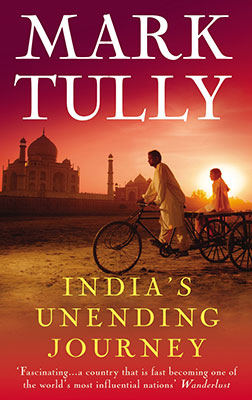
Book Review by Bene Eapen
Title of the Book: India’s Unending Journey
Name of the Author: Mark Tully
Genre: Travel History
Language: English
My View: Mark Tully knows India like by the back of his hand. It’s a truly remarkable account of India’s traditions and modern customs.
My Rating: Must Read
Central Idea of the Book:
Mark Tully is a citizen of two countries and two cultures, both of which have shaped his thinking and given him a unique perspective on the world today. In this thoughtful and remarkable book, he shares the formative experiences of his upbringing, his early vocation as a priest, his distinguished broadcasting career, and his fascination for India’s traditions as well as its modern customs. In a fascinating, accessible style, Tully shows the many lessons he has learned from India and—most importantly—what he believes India has yet to teach other countries about ways to deal with economic growth and poverty relief, environmental issues, education, management, and democracy. As he explains, India’s journey is one towards a future in which we must draw deeply upon our spiritual and material resources and strive to find a balance in the face of uncertainty.
Festivals to Look Out For
Pongal, Tamil Nadu
January 15-18, 2024 (dates may vary depending on the lunar calendar)
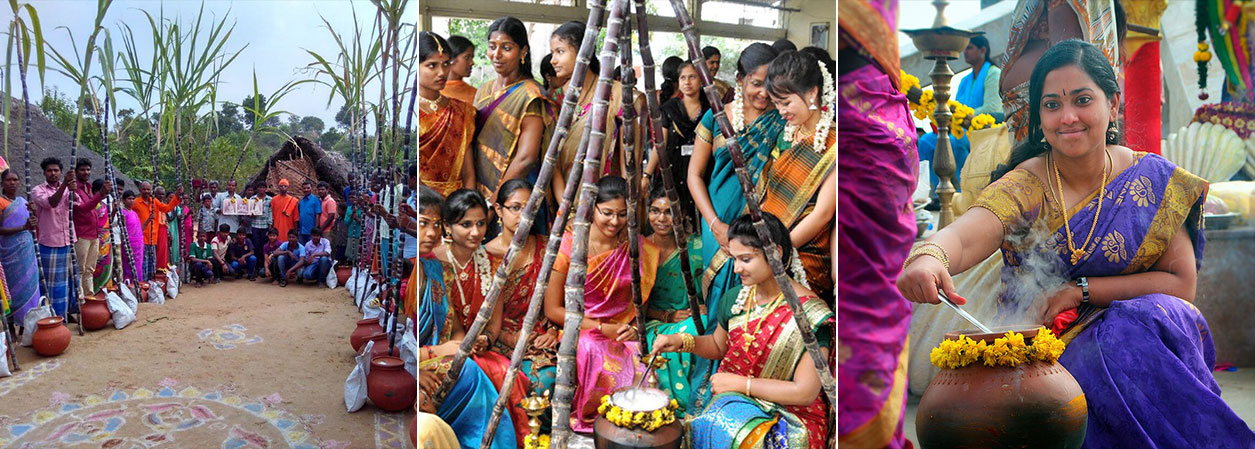
Pongal is a four-day harvest festival that sees the entire state of Tamil Nadu in a tizzy of celebrations giving thanks to the Sun God for the overflowing abundance of harvest for the year. Pongal is also referred to the traditional practice of preparing sweet rice infused with milk and jaggery in a new clay pot. The four days are named differently with a unique ritual followed on each of the days. The spirit of celebration for these four days is infectious with positivity dripping in every corner.
Day 1: Bhogi sees the disposal of useless household things into a bonfire marking the riddance of worthless things.
Day 2: Thai Pongal is when the first rice harvest of the season is cooked & offered to Sun God after decorating the houses.
Day 3: Mattu Pongal – Cattles are adorned with garlands, worshipped, and taken around for procession.
Day 4: Kaanum Pongal – Families visit each other to share the festivities of Pongal.
Plan a trip to India in January with us and get a chance to participate in the traditional festival celebrated by the Tamil community. The celebration with a local family can be arranged in various cities in Tamil Nadu based on the guests’ itinerary. The festivities will commence with a traditional welcome followed by a pooja. The cultural immersion will continue with witnessing the preparation and tasting of the sweet Pongal. The highlight of the celebration will be a traditional vegetarian lunch served on a banana leaf. The celebration will conclude with a memorable photo session, capturing moments with the local family and presenting guests with a thoughtful gift ensuring a lasting memory of this enriching Pongal celebration.
Write to your relationship manager for more details
Picture Gallery
The harvest festival season of India begins in mid-January which marks the end of winter and the harvesting season. It is celebrated as Pongal in Tamil Nadu, Magh Bihu in Assam, Lohri in Punjab, and Makar Sankranti in most parts of North India where the Sun God is worshiped for his bounty. The festivities continue in different parts of India to express gratitude to the elements of nature till about April with the advent of spring when it is the time for the sowing season. After a brief lull, the festivities start again with Onam in Kerala in August when the monsoon is at its ebb and goes all the way to December when the Garo Tribe of Meghalaya celebrates the Wangala Festival – an extravaganza of 100 drums – which marks the onset of winter and where, again, like Makar Sankranti, the Sun God is worshiped for a bumper winter harvest. Many tribes of Northeast India celebrate their harvest festivals during June and July when the monsoon is at its peak. Elaborate ceremonies are a part of the rituals where they seek blessings from Mother Earth, their ancestors, and the guardian deities for a good harvest.
RESOURCES
SITE LINKS
CONTACT US
+ 91 (124) 4563000
Tower B, Delta Square, M.G. Road, Sector 25, Gurgaon - 122001, Haryana, National Capital Region of Delhi, India


